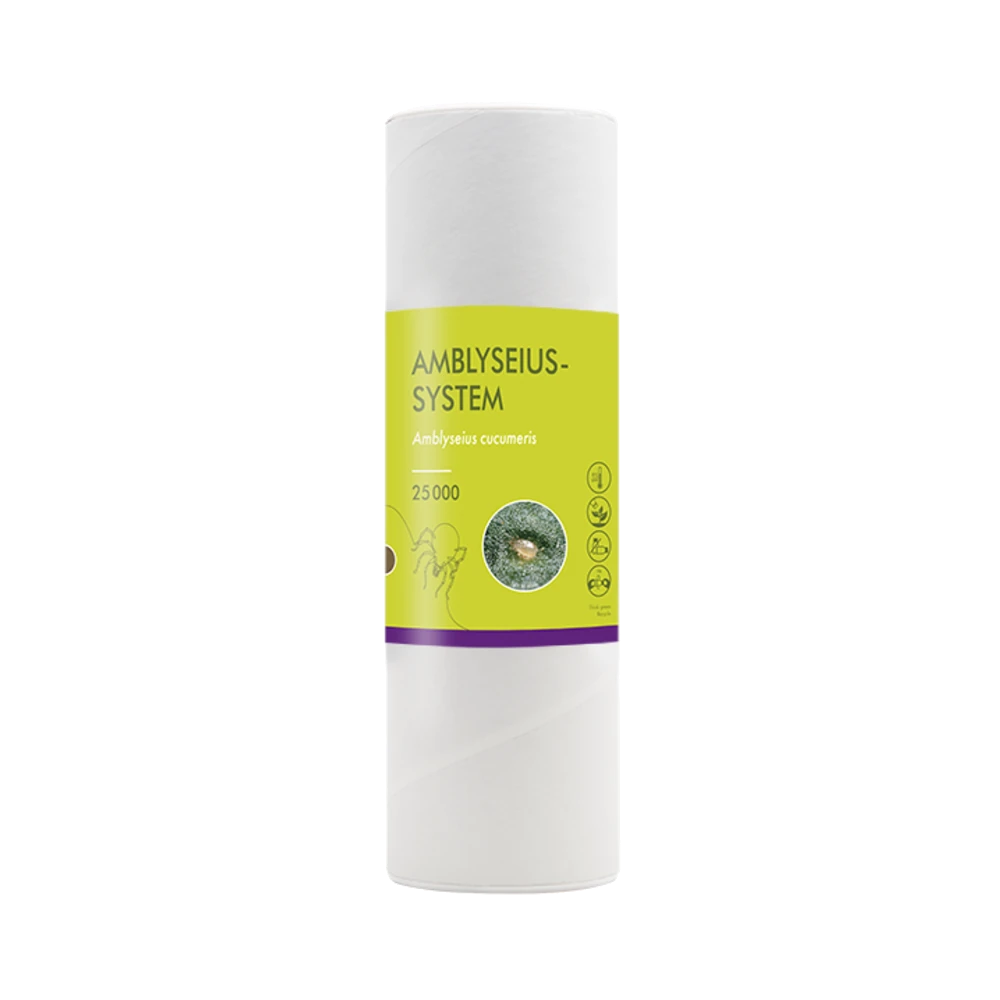BioBestrijding | Predatory mite against Thrips, Spider Mite, Bramble Mite and Pollen ~ Amblyseius cucumeris
BioBestrijding Predatory mite against thrips, red spider mite and pollen
Attention! This product consists of live animals and is only available for order in the Netherlands or Belgium. If you order more than just Bio Fight, there will be an additional charge of € 7.95 due to dropshipping from the supplier.
The tiny Amblyseius cucumeris predatory mite is a real thrips and spider mite killer. Each day the predatory mite eats up to 6! The 0.5 mm sized predatory mite goes after young thrips and spider mites at the bottom of the leaf and along the leaf veins. The Amblyseius cucumeris switches to a plant friendly pollen diet when there is no prey. You can therefore put the predatory mite on stand-by as a preventive measure. If you use the predatory mite at the first appearance of thrips, you can prevent the infestation from getting out of hand later.
Predatory mites are effective against
Amblyseius cucumeris predatory mites naturally occur on the plant and go after the pest there. Predatory mites search for the pest, prick it with their long sucking snout and kill the prey with a poison. Then the starving predatory mite eats the pest completely and the controller goes looking for a new prey. Is there (still) no thrips, spider mites or blackberry mite to be found? No problem, the predatory mites will gladly switch to a plant friendly pollen diet for a while. Amblyseius cucumeris predatory mites only go after the natural enemy and leave humans, animals and plants alone.
What are Predatory Mites?
The tiny Amblyseius cucumeris predatory mite is a real thrips and spider mite killer. Each day the predatory mite eats up to 6! The 0,5mm big predatory mite goes after the young thrips and spider mite at the bottom of the leaf and along the leaf veins.
How many predatory mites do you need?
How many predatory mites you need, depends on how severe the infestation is. In a preventive deployment, you often have enough with 200 predatory mites per m2. If the infestation gets worse, you can choose to increase the dose to up to 1000 predatory mites per m2. Be careful, if there is too little prey, panicked predatory mites turn to cannibalism!
Temperature and environment
Predatory mites prefer warm weather and work best at 17-25°C. Indoors the predatory mites can be introduced at a higher temperature. This means that predatory mites can be used indoors, but also outdoors in greenhouses. Above 30°C the predatory mites overheat and seek cooling in the moist plant tissues. The predatory mites need humidity above 60% and as with many biological beneficials, the higher the humidity, the faster the predator reproduces. Therefore, do not forget to spray daily, as the predators will start working fastest.
Deployment
The predatory mites are delivered in a tube with which you can easily spread the mites on the plant. It is important to apply the predatory mites as soon as possible after receipt and not to water the plant just before application. Predatory mites absorb moisture with their hairs and in a wet soil you have the chance that the brand new predators drown.
- Allow the packaging to come to room temperature and turn the tube around to distribute the predatory mites evenly.
- Open the tube and sprinkle the predatory mites in heaps on top of the leaves. Distribute the predatory mites evenly over the infected plants and count 200-1000 predatory mites per m2.
- Still some left? Sprinkle the remaining predatory mites on non-infected plants. Thrips and spider mites will jump to a new plant and it is of course a pity if you are back to square one.
- Afterwards, leave the packaging for 2-3 days near an infected plant. This way, remaining pest controllers will also come into action.
We always recommend to introduce predatory mites again after 2-3 weeks. This has to do with the life cycles of the pest and the predator. Where the predatory mite population starts to decline after two weeks, a new load of thrips / spider mites appears. Give the first predators a well-deserved helping hand and the last predators will be dealt with effectively, reducing the risk of the pest returning.
Shelf life
Introduce predatory mites as soon as possible after receiving them. Biological beneficials are living animals with a short lifespan. If nothing else, store the predatory mites in the refrigerator at 8-10°C for 1-2 days at most. Never freeze predatory mites.
- Shelf life: 1 to 2 days
- Storage temperature: 8-10°C
- In the dark, lying down



